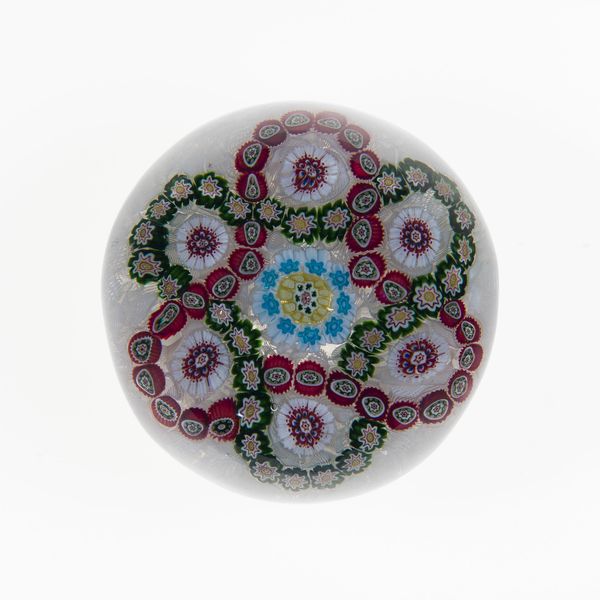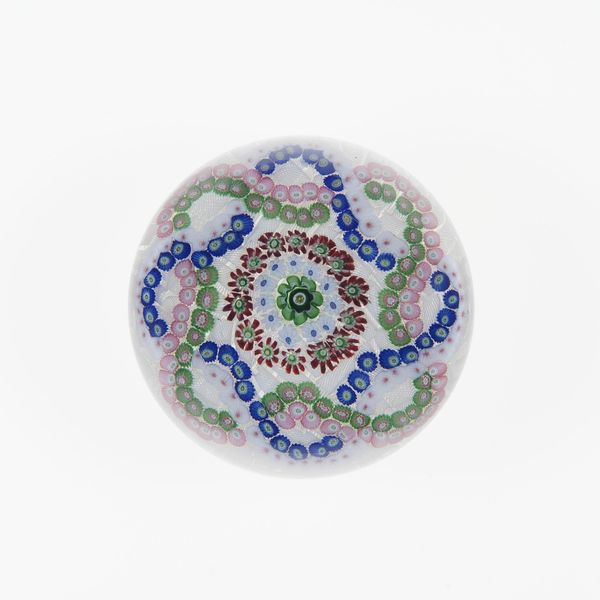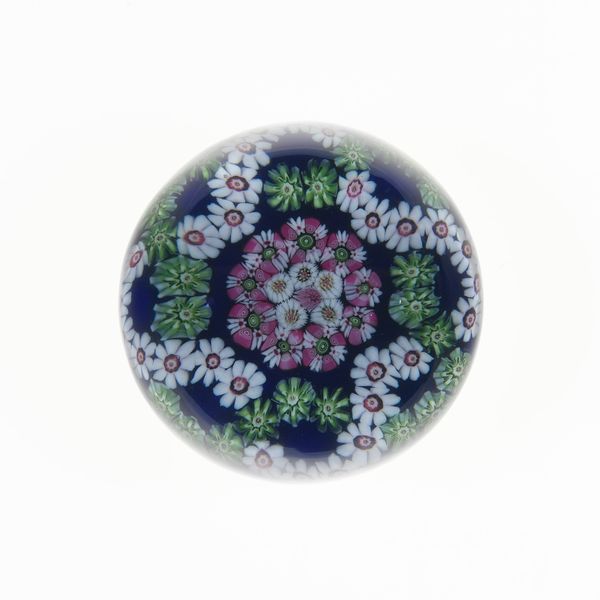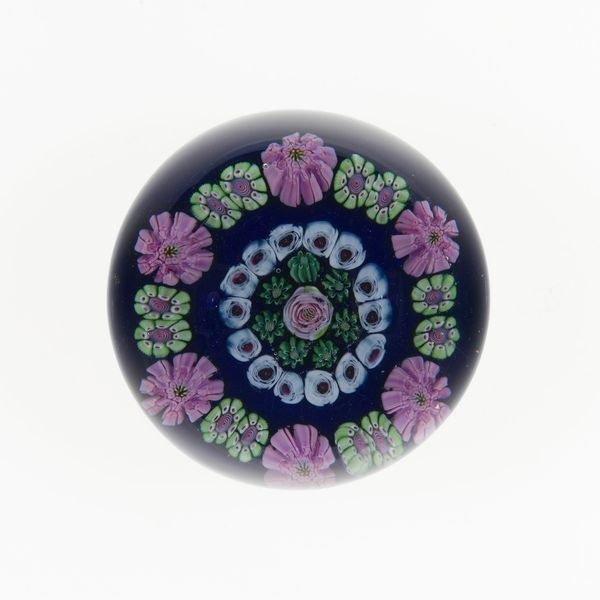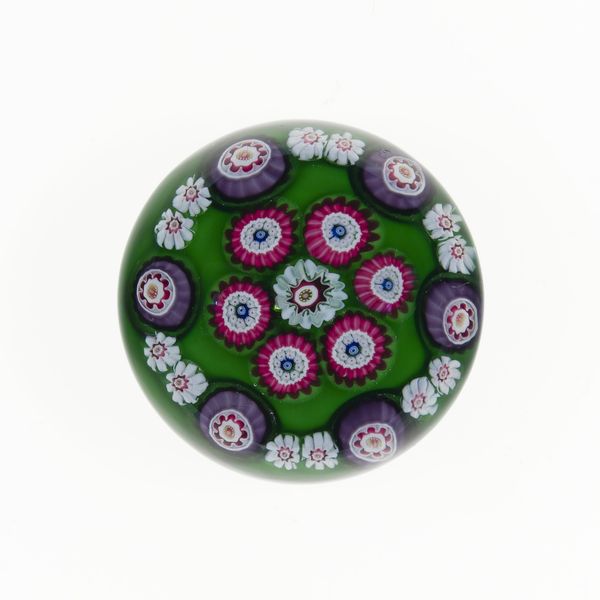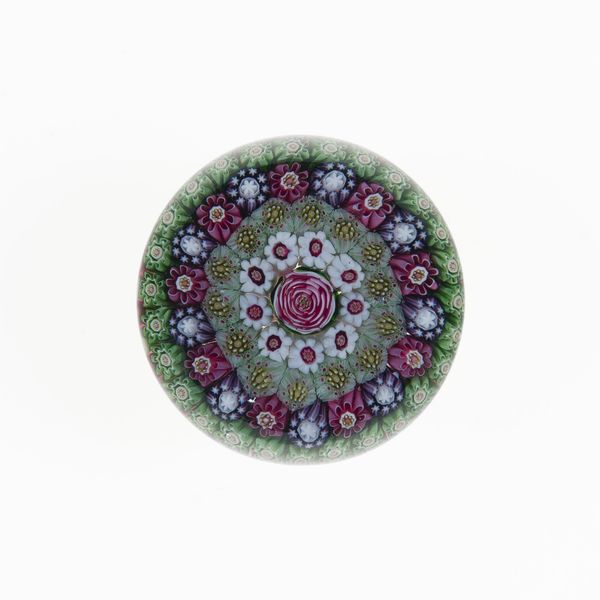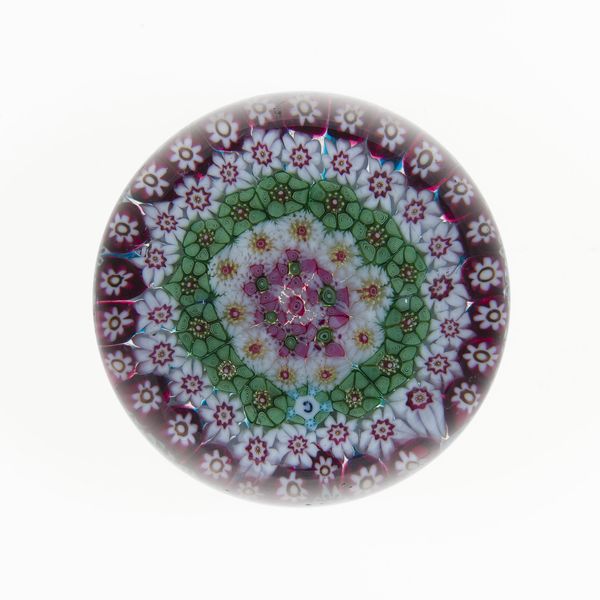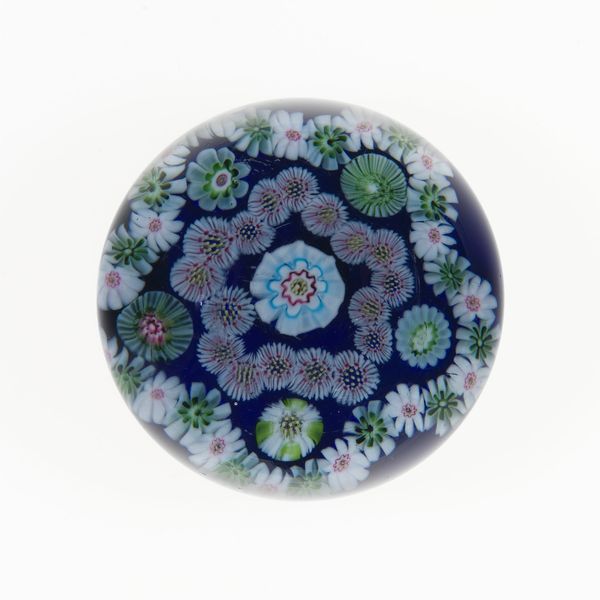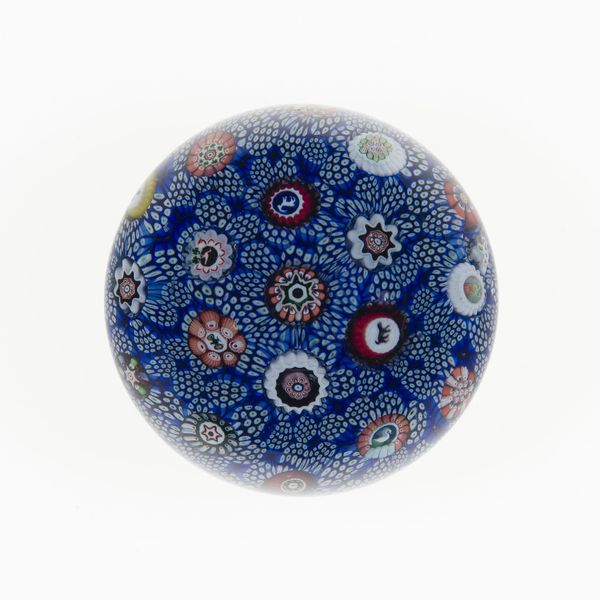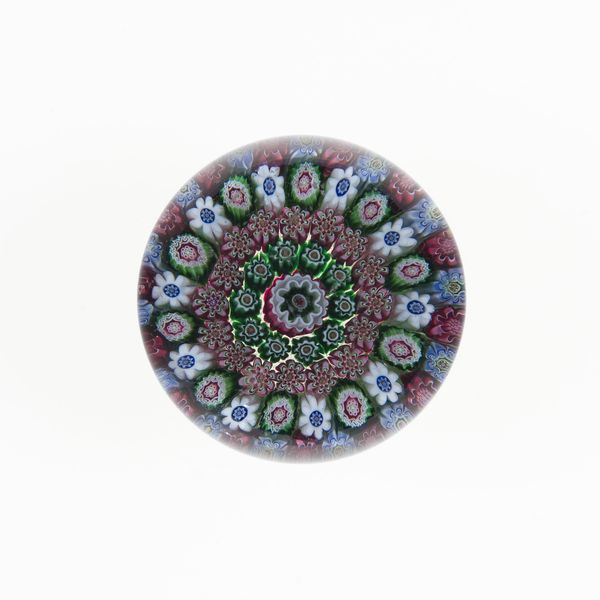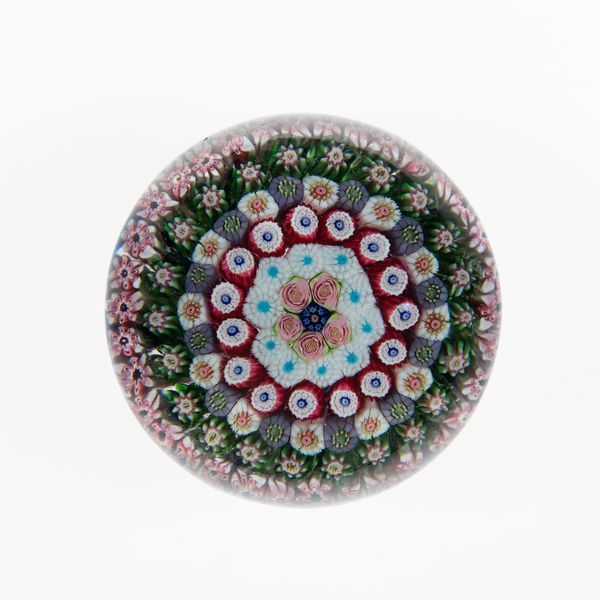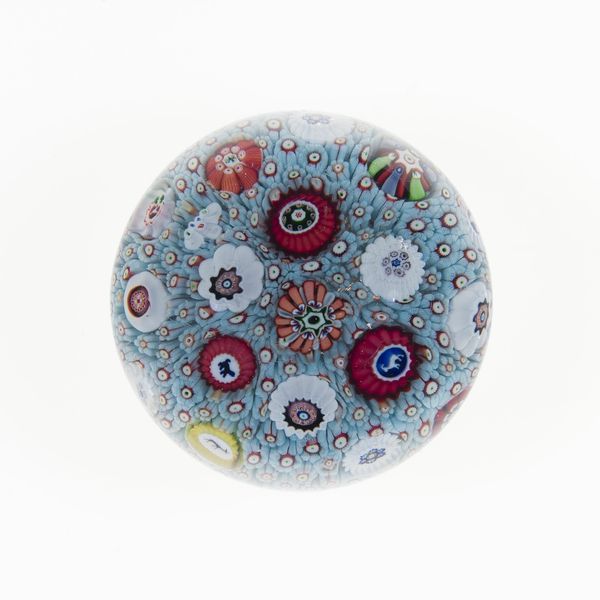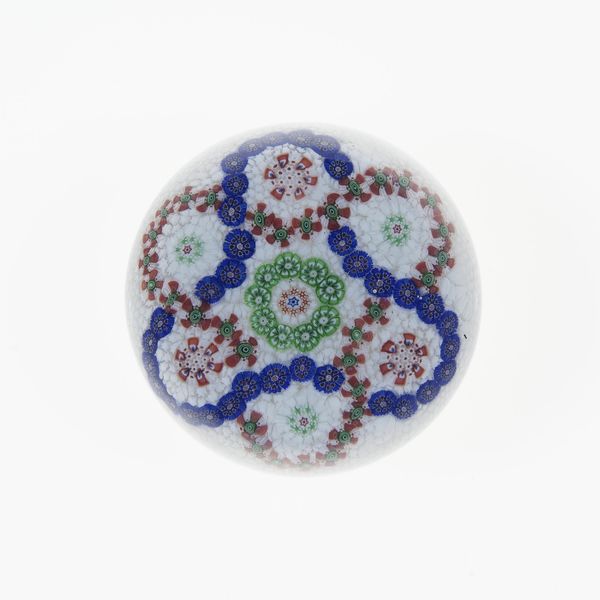
paper, glass
#
product photograph merchandise
#
clear focal point
#
product studio photography
#
circular oval feature
#
round design
#
bright focal point
#
paper
#
glass
#
geometric
#
white focal point
#
france
#
product photo
#
round circular shape
#
decorative-art
#
concentric circle
Dimensions: Diam. 8.6 cm
Copyright: Public Domain
Curator: Before us sits a beautiful glass paperweight crafted by the Clichy Glasshouse sometime between 1845 and 1860. It's part of the Art Institute of Chicago's collection. Editor: My first impression is one of delicate precision. The tight, concentric floral patterns create a kind of miniaturized cosmos trapped within the clear glass. Curator: Precisely! It reflects the era's fascination with both scientific observation and decorative art. Consider, though, that paperweights like this also acted as symbols of status during a time when literacy was increasing and correspondence was becoming more widespread. To have such a finely crafted object on one’s desk spoke volumes. Editor: Yes, these were definitively bourgeois objects, showcasing not only wealth but also a refined aesthetic sensibility. Do you see, as well, how the intricate flower designs draw from traditional millefiori techniques, translating them into this domestic setting? There's continuity here, an echo of older craftsmanship adapted to new industrial production methods and a growing market for luxury goods. Curator: And consider the floral symbolism, common in many cultures. The flowers encased could be interpreted as representing the beauty and transience of life, preserved for eternity within this object. It's fascinating how something so small can hold so many layers of meaning and cultural memory. What do you see when you consider this object's symbolic resonance? Editor: It presents an ordered vision of nature, reflecting perhaps a desire to control and categorize the natural world during that era. It feels optimistic, despite that inevitable fading and the quiet stillness embedded in it. But in this perfectly self-contained universe of glass, is there also a faint unease? Curator: Perhaps! A contained world offers both protection and constraint, doesn't it? It is so satisfying to see how the combination of the colors, form, function, and implied cultural symbolism combine in this artifact to create its emotional resonance. Editor: I agree entirely. It speaks to how everyday objects can become potent carriers of cultural aspirations, anxieties, and artistic skill, doesn't it? It is something to see how a small objet d'art becomes, in retrospect, a carrier of cultural memory.
Comments
No comments
Be the first to comment and join the conversation on the ultimate creative platform.
